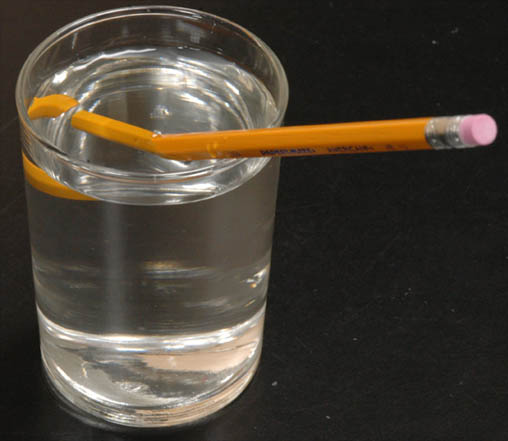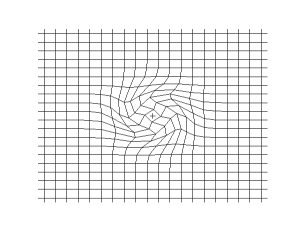Wave Behavior
Use this page to record what you've learned about how waves behave. Use "Heading Two" for subtitles, and consider including information on diffraction, reflection, refraction and interference. Remember that including examples is always a great way to help your reader to understand new information.
Refraction is the changing or bending of any wave as it passes through a new medium in which it has a different velocity or speed.The wave simply may be traveling at an angle other than 90°. The most commonly seen form of this is refraction of a light wave, but any other type of wave is capable of this too,even sound waves.One example of this is seen in the uses of refraction with light waves in a glass of water. When you have a clear tall glass of water and place a straw in it the straw appears broken. Even though the straw may look broken it really isn't, this is just a trick of refraction. Due to the changes of interacting with a new medium and entering that medium with a different speed the refraction of light waves just gives us the intention that the straw is really broken. Another intresting use of refraction is how light waves refract to create a rainbow. To create a rainbow white light must split as it passes through a glass prism. The light then refracts at different angles giving us a rainbow.

When someone or something hits or moves that is called a disturbance. When someone or something disturbs the medium it makes waves. The size of the wave depends on the force or pressure on the water. If there was an earthquake in the water then it would make a huge wave. If a small fish hits the surface of the water it would only make small ripples in the water. It might also depend on how much energy the disturbance has put in to it. It might even depend on where the wave or disturbance started.

When you take a string or rope and you tie it to another object, and flick your wrist up and down.The string is not moving forwards, only up and down. The wave you send through the string however, is moving forward. This is an example of a transverse wave, when the direction the medium is moving is perpendicular to the direction of the wave. In a longitutinal wave, the medium moves in the same direction as the disturbance.

There are multiple types of waves.
Here is a list of some types of waves:
1. Heat waves
2. Water waves
3. Sound waves (also called vibrations)
4. Air waves
5. S-waves (from earthquakes-similar to a low and slow up and down movement)

Propagation of a spherical S-wave in a 2d grid (empirical model)
Comments (0)
You don't have permission to comment on this page.